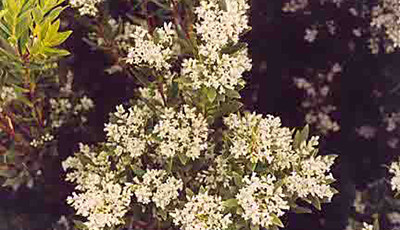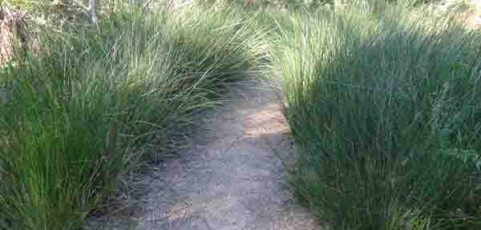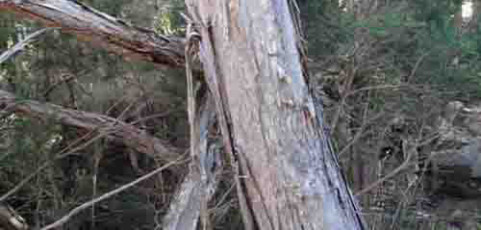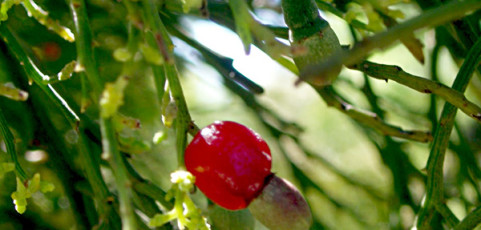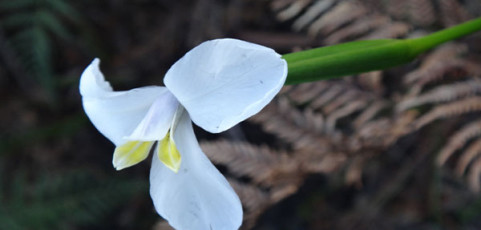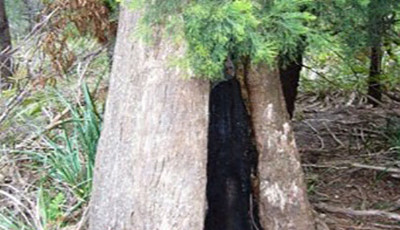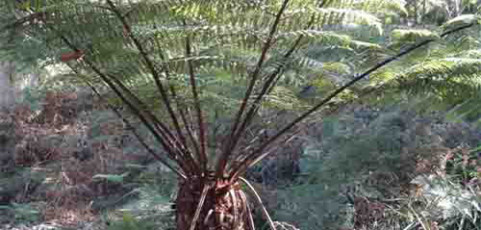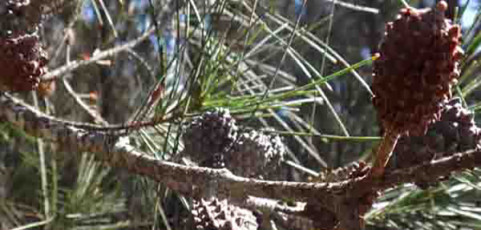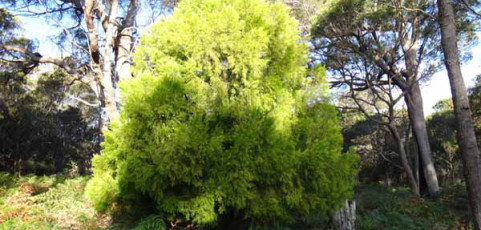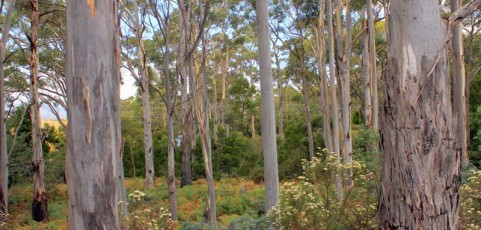Grasses
Read MorePaperbark
Canoes were constructed from the paperbark tree which was in plentiful supply in the area. They were probably up to 5 metres long and made from thin strips of the bark tightly bound and lashed together with string for strength. Canoes were used to travel both long and short distances to the offshore islands.
Native Cherry
A variety of bush foods; fruits, roots, tubers were significant sources of nutrition for the leenerrerter people and were collected by the women.
White Flag Iris
Read MoreBlack peppermint
Grandfather and grandmother peppermint gum were culturally significant to the leenerrerter clanspeople both as a ceremonial tree and burial tree, and remain so for their descendants . The leenerrerter people practiced complex forms of reverence towards the remains of the dead. One practice was to place the deceased in an upright position in the burnt-out hollows of the living peppermint gum using lengths of brushwood or spears. Strips of...
Spiky Tree Fern
The hardy and adaptable Cyathea australis or Spiky tree fern is found at Tree Fern Gully on the River-Forest section of the circuit. It has roots and hair like follicles on its trunk giving it a rough texture and it is adaptable to a variety of climates and soils. Ferns are also amongst the oldest plants in the world dating back to the Carboniferous period 360 million years ago and the Spiky Tree fern is wholly protected in...
Sheoak closeup
The She-oak ( Allocasuarina littoralis ) ‘closed’ forests are remarkably quiet. It is the most drought resistant tree in Tasmania. The needle like foliage is a dull dark grey. The fallen needles create a soft cushioning mat.
The Native Cherry
The Native Cherry (Exocarpus cupressiformis) tree is a semi-parasitic plant. It attaches to the roots of the dominant black peppermint eucalypt trees around it. It is an attractive conical shaped tree with bright green dense foliage.
White gum
White gum ( Eucalyptus viminalis), are dominant on the river reserve near the Ada Street shelter. Alongside the river there are moisture-loving herbs, ferns, sedges, rushes and reeds. Paperbark swamplands occur where the Brid River flows into Anderson Bay. A riparian corridor with dense plantings of a range of small native trees and shrubs is important to the restoration of the Riparian reserve. Riparian revegetation practices helps stabilise...

